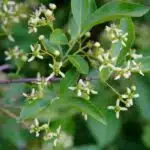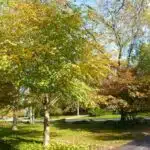European Beech, scientifically known as Fagus sylvatica, is a deciduous tree that belongs to the Fagaceae family. It is native to Europe and parts of Asia but has been widely cultivated in many regions around the world for its ornamental value, shade provision, and timber. European Beech is prized for its attractive foliage, which emerges in spring with a fresh green color and gradually deepens to a rich coppery brown in autumn. For gardeners who wish to grow this majestic tree on their property or as part of a landscaping project, it is necessary to understand its plant care requirements.
In this article, we will explore the essential aspects of European Beech plant care and growing guide. We will discuss the tree’s growth habits, soil preferences, watering needs, fertilization requirements, pruning techniques, pest and disease management strategies, and propagation methods. By following our expert advice on how to care for your European Beech trees successfully, you can ensure that they thrive in your garden or landscape setting and provide you with years of beauty and enjoyment. Let us dive into the exciting world of European Beech trees!
Overview Of The European Beech Tree
The European beech tree, scientifically known as Fagus sylvatica, is a magnificent deciduous tree that is native to Europe. This majestic tree has been cultivated in various parts of the world for its many benefits in landscaping. It is widely recognized for its smooth grey bark, dark green foliage during summer and stunning copper-colored leaves in autumn.
The history and cultural significance of the European beech cannot be overstated. It has long been revered by the ancient Romans who believed it represented prosperity and longevity. In medieval times, the wood from the tree was used to make furniture, musical instruments, and even weapons. Today, it continues to be a symbol of strength and grandeur.
In addition to its aesthetic value, the European beech offers many benefits when incorporated into a landscape design. It provides ample shade during hot summers and acts as an excellent windbreak during winter months. The leaves also add organic matter to soil which helps improve its fertility. Understanding the growth habits of this tree is key to maximizing these benefits while minimizing any potential drawbacks.
Understanding The Growth Habits Of European Beech
European Beech trees are highly esteemed for their beauty, with a symmetrical and easily identifiable shape. They are also known for their longevity, with some trees living for over 200 years. These deciduous trees thrive in temperate climates and can grow up to 80 feet tall and 50 feet wide.
Growing conditions are essential when planting European Beech trees. These trees prefer well-drained soil that is rich in organic matter, with a pH level between 6.5 and 7.5. They also require ample sunlight to grow properly, but they can tolerate some shade as well. When planting new saplings, it is important to ensure they have enough space to spread out their roots.
Maintenance techniques for European Beech trees involve regular pruning and fertilizing. Pruning should be done during the dormant season to promote growth and maintain the tree’s shape. Fertilization should be done at least once a year with a slow-release fertilizer that is high in nitrogen, potassium, and phosphorus. Proper watering is also important, especially during the first few years after planting.
Understanding the growth habits of European Beech trees requires knowledge of its soil preferences as well. These trees prefer soil that is moist but not waterlogged or too dry. When planting saplings or transplants, it is recommended to incorporate compost or other organic material into the soil to improve drainage and nutrient availability. With proper growing conditions and maintenance techniques in place, European Beech trees can thrive for many years to come.
Soil Preferences For European Beech Trees
European beech trees are known for their adaptability to different soil types and pH levels. However, they thrive best in moist, well-drained soils that are rich in nutrients. Before planting your European beech tree, it is essential to prepare the soil adequately. The first step is to clear the planting site of any debris or weeds that may hinder the growth of your plant.
After clearing the planting site, you should loosen the soil using a fork or tiller. This process helps improve the soil’s aeration and drainage capabilities, creating an environment conducive for root growth. Additionally, incorporating organic matter into the soil will improve its fertility by adding essential nutrients required by your plant.
Nutrient management is critical in maintaining healthy European beech trees. These plants require high levels of nitrogen to support their growth and development. It is advisable to fertilize your plant regularly during its growing season, which usually runs from spring through summer. However, excessive fertilizer application can lead to nutrient burn and other adverse effects on your tree’s health. Therefore, it is essential to follow recommended fertilization rates and schedules as per your soil test results.
Maintaining optimal growing conditions for European beech trees requires adequate preparation of the planting site’s soil and proper nutrient management practices throughout the growing season. In addition to these practices, watering plays a crucial role in ensuring that your tree thrives optimally. In the subsequent section, we will discuss watering needs for European beech trees in detail.
Watering Needs For European Beech Trees
European Beech trees are known to be a valuable addition to any garden, park, or landscape. They can significantly enhance the aesthetic appeal of any surroundings with their beautiful foliage and elegant structure. According to research, these trees have a high tolerance for various soil conditions and can grow up to 50 feet tall. However, planting European Beech trees in the wrong type of soil may hinder their growth and development.
Watering frequency is an essential aspect of maintaining healthy European Beech trees. These trees require moderate watering during the growing season, especially during periods of drought or hot weather. Over-watering or under-watering can lead to damage or even death of the tree. Checking soil moisture levels regularly will help determine if it’s time for watering.
Soil moisture plays a crucial role in ensuring that European Beech Trees remain healthy and thrive well in their environment. If the soil is too dry, it will cause stress on the tree, which can attract pests and diseases. On the other hand, too much moisture in the soil can lead to root rot and fungal infections. It’s necessary to maintain proper soil moisture levels by providing adequate water when needed while ensuring proper drainage at all times.
Moving on from watering needs for European Beech Trees, understanding fertilization requirements is equally important for their optimal growth and maintenance. To ensure that these trees remain healthy throughout their lifespan, it’s vital to provide them with adequate nutrients through fertilization. Proper fertilization helps promote healthy foliage growth while enhancing resistance against pests and diseases that may affect their overall health.
Fertilization Requirements For European Beech Trees
Fertilization is an essential aspect of caring for European beech trees. To ensure optimal growth and development, it is important to understand the different types of fertilizers available. Organic and synthetic fertilizers are the two main types used for feeding plants. Organic fertilizers are derived from natural sources such as animal manure, compost, and bone meal. They release nutrients slowly over time and improve soil health by adding organic matter. On the other hand, synthetic fertilizers are manufactured from chemicals and provide an immediate boost of plant nutrients.
Timing of fertilization is also critical for maintaining healthy European beech trees. It is best to apply fertilizer in early spring before new growth begins or in late fall after leaf drop when the tree is dormant. Applying fertilizer during these periods ensures that the tree has access to nutrients when it needs them most. Additionally, avoid applying fertilizer during hot weather or drought conditions as this can lead to root burn or damage.
In summary, proper fertilization is crucial for maintaining healthy European beech trees. Understanding the different types of fertilizers available and their benefits will help you make informed decisions about what type to use in your garden. Timing of application is also crucial for optimal growth and development, so be sure to apply fertilizer at the right time of year to maximize its effectiveness. In the next section, we will discuss pruning techniques for European beech trees that will help promote healthy growth and vibrant foliage.
Pruning Techniques For European Beech Trees
After understanding the fertilization requirements of European Beech Trees, it is important to know how to properly prune them. Pruning is a crucial aspect of maintaining the health and appearance of these trees. It involves removing dead, damaged or diseased branches, shaping the tree for better growth and preventing potential hazards.
Pruning frequency depends on the age and size of the tree. Younger trees require less pruning, while older trees need more attention. The best time to prune is during late fall or early winter when the leaves have fallen off, and the sap has moved back into the roots. Tools such as pruning shears, loppers, hand saws or chainsaws are used depending on the size of branches being cut.
Proper pruning techniques are vital in ensuring healthy growth for European Beech Trees. Common mistakes to avoid include cutting too close to the trunk or leaving stubs that can lead to rotting wood or insect infestation. It is also important not to over-prune as this can stress the tree and affect its overall health. Properly pruned trees will have strong branch structure while providing an aesthetically pleasing look.
Moving forward, it is important to note that pests and diseases can still impact European Beech Trees despite proper pruning techniques. These issues range from fungal infections like beech bark disease to pests like aphids and scale insects that can weaken trees over time. Understanding how to identify and treat these problems will ensure healthy growth for your European Beech Tree.
Common Pests And Diseases Of European Beech Trees
The European beech tree is a magnificent plant that can add stunning beauty to any landscape with its lush foliage and graceful branches. However, just like any other plant, it is susceptible to various pests and diseases that can harm its growth and appearance. To ensure that your European beech tree thrives, it is crucial to understand the common pests and diseases that plague this species.
One of the most common pests of European beech trees is the beech scale insect. These small insects attach themselves to the bark of the tree, sucking out its sap and depriving it of vital nutrients. Other pests include aphids, caterpillars, and spider mites. These pests can cause significant damage if left untreated, leading to stunted growth, defoliation, and even death.
Diseases such as beech bark disease and powdery mildew also pose a threat to European beech trees. Preventive methods such as ensuring proper soil drainage and avoiding overcrowding can help mitigate these risks. Treatment options include fungicides for powdery mildew and pruning infected areas for beech bark disease. It is essential to monitor your European beech tree regularly for signs of infestation or infection so that you can take swift action before irreparable damage occurs.
Strategies For Managing Pests And Diseases In European Beech Trees
Integrated pest management (IPM) is a proactive approach to managing pests and diseases in European beech trees. IPM strategies involve monitoring the trees regularly for signs of pests or disease, identifying the specific problem, and then choosing the most appropriate method of control. This may involve cultural controls such as pruning or fertilizing, biological controls such as introducing beneficial insects, or chemical controls such as using pesticides.
Natural remedies can also be effective in managing pests and diseases in European beech trees. Some natural remedies include spraying the trees with a mixture of water and soap to deter aphids or using neem oil to control spider mites. Other options include introducing predatory insects like ladybugs or lacewings to help control pest populations.
When it comes to managing pests and diseases in European beech trees, prevention is key. Proper tree care practices such as regular watering and fertilization can help keep the trees healthy and less susceptible to problems. Additionally, removing dead or diseased branches promptly can prevent the spread of disease throughout the tree. By practicing IPM strategies and utilizing natural remedies when possible, gardeners can effectively manage pests and diseases without causing harm to the environment or other beneficial organisms.
Moving on from pest management, let’s explore propagation methods for European beech trees.
Propagation Methods For European Beech Trees
As horticulturalists, we are aware of the diverse methods that can be used to propagate plants. In this section, we will explore some of the techniques used in propagating European Beech Trees. Plant propagation is an essential step in expanding your garden or landscape, and it ensures that you get a large harvest of fruits or flowers from your plant.
Air layering is one way to propagate European Beech Trees. This method involves creating a small wound on the tree’s bark, which allows roots to grow from that point. It is a suitable method for hardwood trees like beech trees because they take time to root using other techniques. Air layering is done by wrapping moist sphagnum moss around the wound and covering it with plastic wrap to create a humid environment for root development.
Another technique used in propagating European Beech Trees is through cuttings. This method involves taking a cutting from a healthy parent plant and planting it in soil or water until roots develop from the cutting. Cuttings are taken during the growing season when new stems have developed enough leaves for photosynthesis. The best part about cuttings is that they produce clones of the parent plant, so you get plants with similar characteristics as the donor plant.
To ensure successful propagation of your European Beech Trees, here are some tips:
- Ensure that you use clean tools when preparing your cuttings
- Keep your air-layered plants moist by misting them regularly
- Use rooting hormone powder to increase chances of success
In conclusion, propagating European Beech Trees requires careful consideration of the appropriate technique for each situation. Air layering and cuttings are two common methods used by horticulturalists today, but it’s essential to follow guidelines carefully for success. With this knowledge, you can expand your garden or landscape without spending too much money on buying new plants every time you need them!
Conclusion: How To Care For Your European Beech Trees Successfully
Your European beech trees require proper care and attention to thrive. It is essential to prevent diseases by keeping the tree healthy, well-fed, and watered. You can achieve this by providing adequate nutrients and water and pruning any dead or diseased branches regularly. Moreover, it is crucial to remove any fallen leaves or debris around the tree’s base as they can harbor pests and diseases.
Seasonal care tips are vital for your European beech trees’ successful growth throughout the year. During springtime, it is critical to prune any damaged or diseased branches before new growth appears. In summer, you should water the tree regularly during dry spells, especially if it is newly planted. Furthermore, you should mulch around the base of the tree to retain moisture in the soil. In autumn, it is recommended to remove any fallen leaves promptly to prevent fungal diseases from developing.
Preventing diseases and providing seasonal care tips are crucial aspects of caring for your European beech trees successfully. By following these simple steps, you can ensure that your tree remains healthy and beautiful for years to come. Remember always to monitor your trees’ health closely and address any issues promptly if they arise. With proper care and attention, your European beech tree will flourish into a magnificent specimen for all to admire.
Conclusion
The European Beech tree is a magnificent plant that can grow up to 80 feet tall with a wide canopy, making it an excellent shade tree. Understanding the growth habits of this plant is crucial to ensure its optimal growth and vitality. The European Beech requires well-draining soil with a slightly acidic pH level, and it prefers partial to full sun exposure.
Watering needs for the European Beech are moderate, with regular watering during the growing season and less frequent watering during winter. Fertilization requirements include applying slow-release fertilizers in spring or fall. Common pests and diseases that may affect the European Beech include scale insects, powdery mildew, and beech bark disease.
Managing these pests and diseases require proper identification and prompt treatment using appropriate insecticides or fungicides. Propagation methods for the European Beech include grafting or seed propagation.
In conclusion, caring for your European Beech trees requires attention to detail in their soil preferences, watering needs, fertilization requirements, managing pests and diseases, and propagation methods. As a horticulturalist or plant expert, understanding these practices is essential for ensuring successful growth of your European Beech trees. With proper care, these magnificent plants can bring beauty and value to any landscape for many years to come.
Image Credits
- “European beech galls” by CameliaTWU (featured)





























